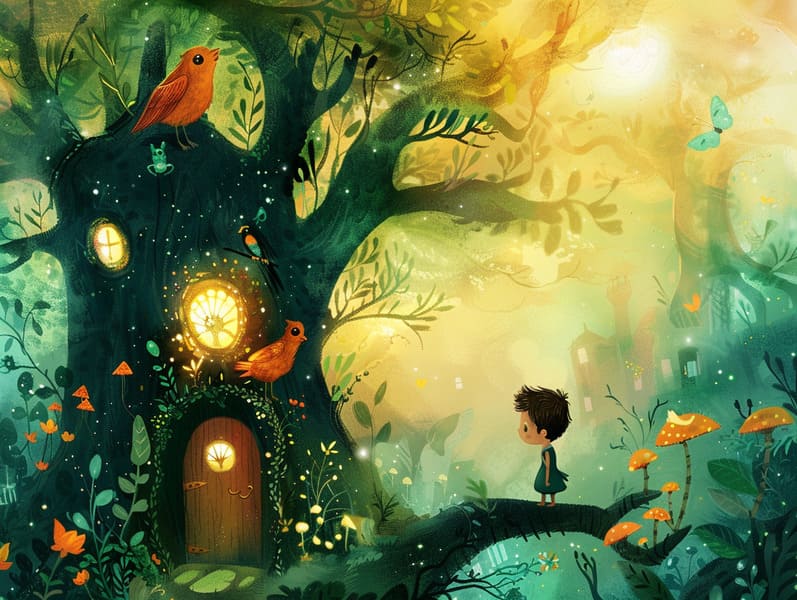The Emergence of Online Fairy Tales with Their Enduring Delight.
The Emergence of Online Fairy Tales with Their Enduring Delight.
Blog Article

Legendary fairy tales have historical significance. These tales have been narrated from one generation to the next far before they were ever written down. They came from a variety of traditions, including European traditions. They were initially told among older generations, often carrying themes and messages aligned with the societal norms and beliefs of the time.
The Grimm brothers, the two Grimm brothers, were among the first to compile and publish many of these beloved fairy tales. Their collection, "Grimm's Fables," included narratives like "Cinder Maid," "Little Brother and Little Sister," and "Schneewittchen," which have since become classics in the world of beloved fairy tales. Similarly, the Danish author's enchanting fairy tales, such as "The Mermaid," and "The Ugly Duckling," have captivated hearts worldwide, guaranteeing their place in the pantheon of beloved fairy tales.
Even though they are old, traditional fairy tales remain as relevant as ever, especially as children's night stories. These charming stories are now available in different formats, including colorful picture books, captivating animations, and free fairy tales online.
Their unwavering allure can be linked to several delightful features:
Life Lessons: Traditional fairy tales often offer important moral lessons. Fairy tales like "The Boy Who Cried Wolf" teach the virtue of being truthful, while "The Tale of the Tortoise and the Hare" demonstrate the benefits of determination and unpretentiousness. These stories offer little ones clear distinctions between virtue and vice, developing their moral compass in a tender yet lasting way.
Empathy and Awareness: Fairy tales frequently involve characters facing challenges and struggles, motivating readers to empathize with their struggles and celebrate their triumphs. For instance, "The Story of Beauty and the Beast" emphasizes the importance of seeing beyond the surface to recognize the true nature of a person, building warmth and insight.
Cultural Understanding: Many timeless fairy tales are imbued with the cultural contexts from which they blossomed. Exploring these tales can provide informative snapshots into different heritages, advancing a sense of world insight and understanding.
Imagination and Innovation: The extraordinary elements in fairy tales—enchanted objects—spark children’s inventiveness. These narratives transport readers to fantasy realms, enhancing fantasy-filled thoughts and a sense of mystery that remains a lifetime.
Classic fairy tales are not only delightful but also pedagogical. They function as fantastical tools in nurturing various thinking and feeling skills in little ones. When timeless fairy tales are read aloud, they advance language acquisition by introducing new vocabulary and intricate sentence structures. This practice also strengthens hearing abilities and attention, as young ones stay focused, eager to see what happens next.
Furthermore, exploring the themes and characters of timeless fairy tales can improve logical thinking and reasoning skills. Little ones learn to discern patterns, expect results, and understand cause and effect. These contemplations also help children convey their thoughts and feelings, fostering their emotional intelligence.
In today’s digital era, the abundance of digital storybooks has made these stories more within reach than ever. Websites and online apps supply broad selections of famous fairy tales that can be perused or listened through anytime, anywhere. Fairy tales told out loud are particularly widespread, supplying an charming way for little ones to be a part of these fantastical tales. Sound books and read-out-loud stories take characters and settings to life, often enhanced by spellbinding music and harmonies that intensify the narrative journey.
The timeless appeal of traditional fairy tales lies in their ability to modify to new eras while continuing with their central messages. Contemporary modernizations of these narratives fairy tales for kids often spotlight more different figures and modern settings, making them relatable to today’s audience. However, the main ideas of fearlessness, kindness, and fairness remain unchanged, continuing to connect with young listeners of all ages.
Traditional fairy tales also offer a sense of calm and knowability. They introduce a organized narrative with a recognizable beginning, middle, and end, often concluding with the conclusion of conflicts and the triumph of rightness over wrongness. This constancy can be encouraging for children, proffering a sense of solidity in an variable world.
Ancient fairy tales continue to delight and inform new generations, maintaining their mystique and applicability in modern society. As nighttime stories for kids, they render accessible a perfect blend of delight and instruction, advancing moral values, empathy, and creativity. The availability of digital storybooks and the popularity of fairy tales read out loud secure that these ancient stories remain accessible to new generations.
By keeping and narrating these narratives, we continue to value the rich tapestry of tales and cultural heritage. Whether you are browsing a artistically illustrated book, delving into a digital library, or listening to an sound book, the charm of Grimm's fairy tales is always within reach. These stories emphasize of the ageless magic of tales and its ability to tie us across generations and cultures.
Be it you are reading a colorful picture book, seeing a web-based library, or listening to an audiobook, the loveliness of Grimm's fairy tales is always within reach.
These fairy tales emphasize of the persistent strength of storytelling and its ability to draw us together across epochs and places, weaving a spell that charms and informs alike.